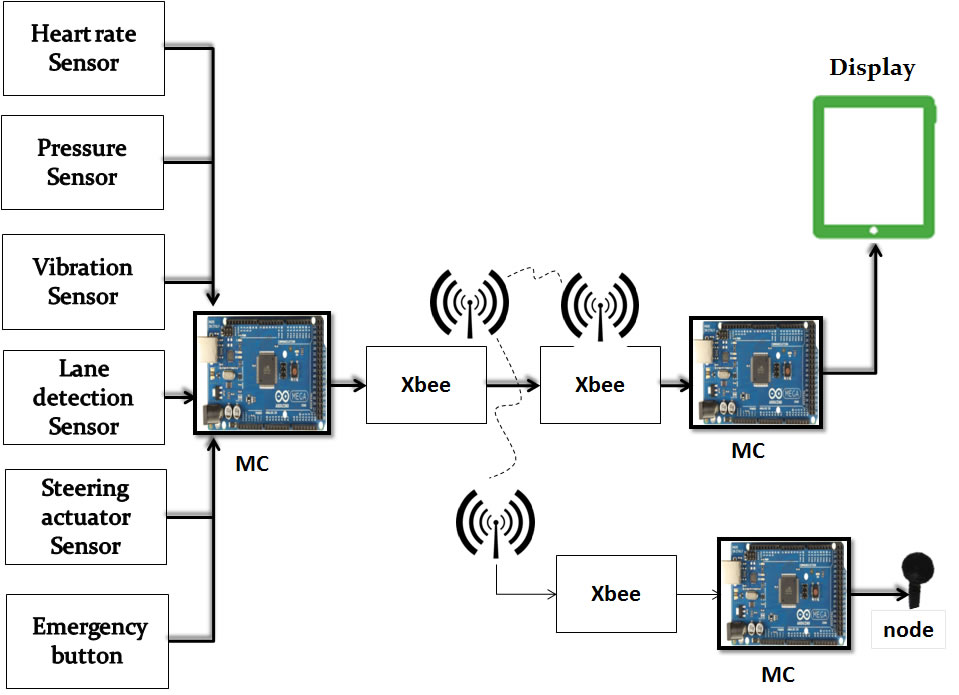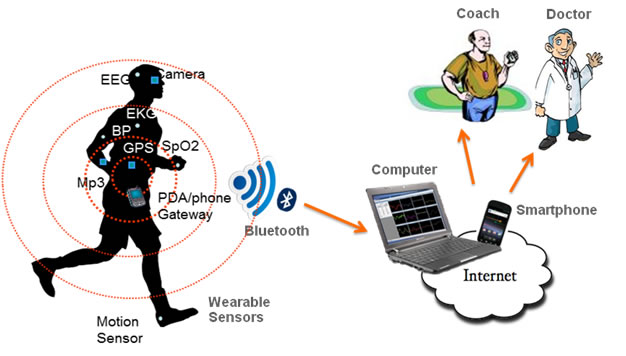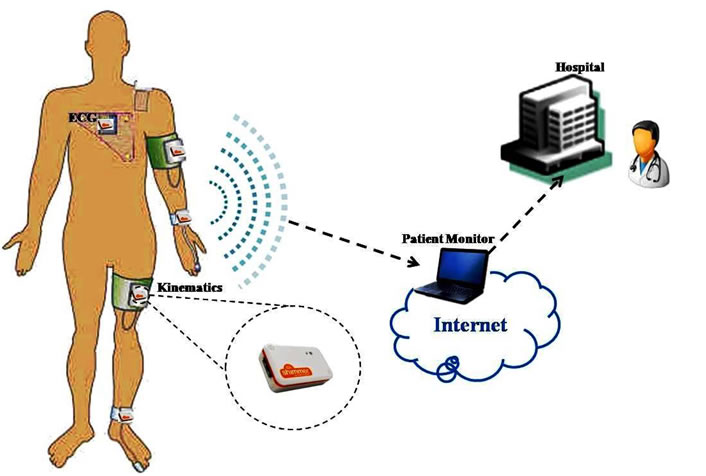-
SmartAuto: Advanced Driver Assistance System
- SmartAuto project team won the third place prize at IoT and Wearable track of IbTIECar'14 competition sponsored by Intel. Congratulation!!
- SmartAuto project received a partial fund from AASTMT.
SmartAuto project students implemented a prototype of a wireless body area network (WBAN) and VANET (car-to-infrastructure communication) modules for real-time driver monitoring and assistance. The prototype monitors the driver status through car integrated sensors that determine the status of driver in real-time, and ultimately eliminate the possibility of accidents that result from driver fatigue/sleepiness. In addition, it includes the implementation of an interactive communication module to enable drivers to communicate with surrounding infrastructure, and send alerts in case of an emergency to a third-party via means of modern communication technologies.

Keywords: Body area networks (BANs); sensors; smart automotives.
News
Home Care: Ambient Assisted Living for Patients and The Elderly
The aim of this project was to implement user-friendly prototypes for an ambient assisted living home care for patients and the elderly. The project include implemented prototypes for measuring various physiological parameters as well as ambient sensing platforms. Physiological parameter measurement prototypes include ECG (Electrocardiogram), body temperature, Blood Pressure, and heart rate. Whereas, ambient sensing include a wireless camera and passive infra red motion detector. The prototypes can wirelessly transmit the collected data to doctors for medical support, and relatives for emergency cases.
Keywords: Ambient Assisted Living (AASL), body area netowrks, elderly care, and smart homes.
SportsBAN: Sports and Tele-Healthcare Wireless Body Area Networks
In SportsBAN project students implemented a wireless BAN (WBAN) for real-time physiological signal and location monitoring of athletes as well as normal subjects via means of body worn and ambient sensors. The captured data was sent in real-time to an off-body central processing unit, typically a PC or smart-phone, and then was processed using specially designed software.

Keywords: Body area networks (BANs); sports; tele-healthcare PublicationH. Shaban, B Helal, M Hamoud, and M. Abou El-Nasr, "SportsMBAN: Sports and Tele-healthcare Wireless Medical Body Area Network for Real-Time Activity Monitoring and Fall Detection", The International Conference
on Health Informatics (ICHI 2013), Vilamoura, Portugal, Nov. 7 - 9 2013, pp. 264 - 267.News: SportsBAN project received ITIDA graduation project fund, GP2013.R8.29. In this fund, selected student graduation projects are funded through ITAC with a maximum of EGP 10,000 per project. The submitted projects are evaluated and sorted, and the projects with the highest scores are chosen to be funded.
Cooperative Wireless Body Area Networks
In this project students investigated wireless body area network cooperation for human movement tracking and ECG measurements, which are believed to provide patients with easy health care for continuous health-monitoring. In addition, taking periodic medical readings via means wireless technologies at home or in the office will aid physicians to periodically supervise the patient’s medical status without having to see the patient. Thus, one important objective was to provide the doctor with the medical readings that can be collected electronically without being in close proximity to the patient. This was done through the measurement of human movement kinematics and ECG signals. The collected information was processed using specially designed software, which in turn enabled the patient to send a full medical chart to the physician’s electronic device. In this way, physicians are expected to have the ability to monitor their patients more efficiently.
Publication
Keywords: Body Area Networks (BANs); cooperation; electrocardiogram (ECG); motion trackingAhmed Baraka, Ahmed Shokry, Ihab Omar, Saged Kamel, Tarek Fouad, Mohamad Abou El-Nasr and Heba Shaban,"A WBAN for human movement kinematics and ECG measurements", E-Health Telecommunication Systems
and Networks(ETSN), vol. 1, no. 2, pp. 19 - 25, Jun. 2012.
AASTMT Homepage